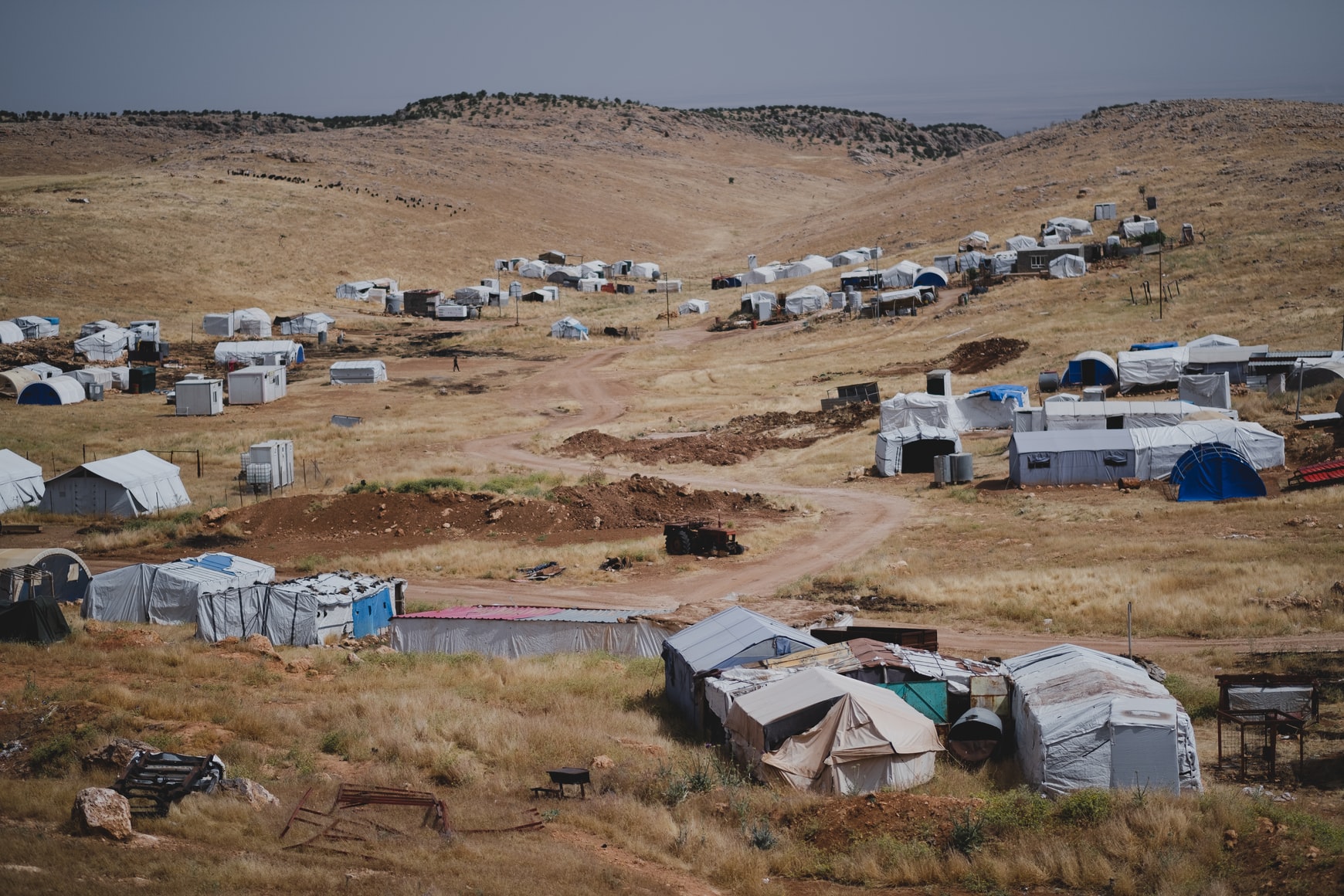The reception of Ukrainian students in British universities has led Rebecca Murray and Maryam Taher to re-examine how the hostile environment manifests on university campuses.
Between February 2022 and January 2023, the UK government allocated 217, 000 visas to people fleeing Ukraine. Not only do these visas grant safe passage to Ukrainians displaced as the result of conflict in their country, they also provide them with a wide range of socioeconomic rights. These include the right to study at universities as a home student (ie paying the same tuition as a British resident), and eligibility for a loan that covers living expenses and tuition fees. Access to higher education is a central part of the package designed to welcome people fleeing Ukraine.
At first glance, the opportunities embedded in policies that facilitate access to higher education for people displaced from Ukraine appear radically different from the discretionary support provided by individual universities. People seeking asylum in the UK typically depend on the ‘goodwill’ of universities to pursue their studies. The government’s response to conflict in Ukraine has its roots in policy enacted during previous conflicts –specifically Afghanistan in 2021 and Syria in 2015. A key consequence of these events is how they led to changes in national policy aimed at opening up opportunities in higher education for people experiencing displacement.
The higher education border
This opening up or debordering within the university sector is significant given the extent to which borders have historically shaped access, participation, and success in higher education. Unlike a geographical border, bordering is the practice of asking people to prove their immigration status in a wide variety of everyday settings, such as accessing healthcare or renting a flat. It perpetuates the trauma of people who have experienced displacement, forcing them to navigate the UK immigration regime as they go about their daily lives.
We use the concept of the higher education border, which describes increasingly diverse and malleable bordering practices, to question if the emerging discourse of extensive debordering reveals the whole story, or if we are instead witnessing a radical rebordering across the sector. In doing so, we consider the construction of the higher education border, its connection to the territorial border, and the implications for Ukrainian nationals in UK higher education.
The hostile environment in HE
The hostile environment is a term increasingly used to describe a series of policies and bordering practices embedded throughout civil society that seek to exclude, deter, and marginalise migrants deemed undesirable from all aspects of social life. The higher education border is the manifestation of the hostile environment in higher education. It is constructed from explicit and implicit borders, which serve to exclude, deter, and other prospective students with experience of displacement.
Steeped in the legacies of British colonial rule, explicit practices of exclusion in higher education are also embedded in the Teaching and Higher Education Act
Steeped in the legacies of British colonial rule, explicit practices of exclusion in higher education are also embedded in the Teaching and Higher Education Act. After the act came into force in 1998, anyone not (yet) qualifying as a refugee was excluded as a home student. This resulted in their reclassification as an international student, with the accompanying higher tuition fee tariff, rendering them ineligible for student finance, and severely limiting employment options or opportunities to secure alternative sources of funding to pursue or continue university studies. In this way, deficits in economic capital, compounded by the lack of settled immigration status, present arguably the most challenging barriers to higher education.
Legislation and policy implemented since this act was passed have led to a raft of punitive restrictions, contributing to a culture of unbelonging in higher education, exemplified by the Home Office holding the power to include a ‘no study’ stipulation in the bail conditions of people subject to immigration control. Explicit modes of exclusion give rise to implicit borders. Implicit borders are constructed from perceived or actual deficits in the capital of displaced people who seek opportunities in higher education (see sidebar).
Implicit bordering practices are malleable, which is why higher education providers can exercise discretion in respect to their application, such as the decision to offer full or partial tuition fee waivers. Though our focus here is on prospective students who have experienced some form of displacement, it is important to note that the hostile environment in higher education reaches across the international student population.
Implicit borders are based on deficits in:
- knowledge capital – the perception and recognition of existing qualifications and pedagogies. Eg graduating from a country outside the UK with a degree not recognised by a UK university.
- linguistic capital – language skills or access to resources required to evidence language ability. Eg access to ESOL to learn English or to IELTS to evidence existing language proficiency.
- social and cultural capital – the ability to navigate complex higher education bureaucracy and the less visible barriers to access and fully participate in university. Eg UCAS admissions or student finance regulations.
Selective responses
The bordering practices under investigation are as extensive as the grassroots resistance to them, evidenced by the activities of organisations such as the Universities of Sanctuary, STAR, REUK and We Belong. Between 2008 and 2015, higher education for displaced persons was accessible via a modest number of Sanctuary scholarships (85 scholarships) with provision created as a result of grassroots lobbying led by people with experience of displacement. The civil war in Syria changed this. Pressure mounted on the UK government at the grassroots, European Union, and international levels to share the perceived burden of people seeking safety. Even though higher education for Syrian refugees in the UK was a policy afterthought, the government did eventually grant access.
The response from the higher education sector was very reactive and reflected national policy: some universities established new Sanctuary scholarship initiatives while others modified existing schemes to offer assistance only to Syrian nationals. A lack of uptake meant that many nationality-specific scholarships, designed by institutions without the advice of potential scholarship recipients or relevant support organisations, were disbanded or reconfigured to support anyone experiencing displacement.
This funding [for Warm Welcome scholarships] is limited, especially when compared with the support available for Ukrainians, who are, for all intents and purposes, treated as British students
Afghanistan, while geographically more distant than Syria, enjoys greater political proximity owing to the UK’s involvement in the invasion and military rule of the country. The government announced the Warm Welcome Scholarships programme in September 2021, early in the Taliban takeover, but it was only recently (2022) operationalised with tight deadlines imposed on prospective students and universities. This funding is limited, especially when compared with the support available for Ukrainians, who are, for all intents and purposes, treated as British students.
Russia’s attack on Ukraine is reminiscent of the country’s previous involvement in Syria that began in 2011, as well as Russia’s historical role in Afghanistan, culminating in the fall of Kabul to the Taliban in 2021. The UK’s reaction to the conflict in Ukraine has been to open up not only the territorial border, but also to encourage everyone from the general public to local authorities to open up their homes and services. This has included UK universities buoyed by the government’s decision to remove the barriers pertaining to immigration status and student finance.
Explicit barriers and implicit borders
The contradictory and complex make-up of the UK’s hostile environment is clearly reflected in the fact that the state has not only granted access to university, but it has also been politically possible to establish safe routes of entry and settlement into the UK for people fleeing Ukraine. This has taken place in tandem with the reinforcement of border controls for people displaced by conflict in other areas of the world, which has been embedded in the Nationality and Borders Act. The growing number of people risking death and serious injury to cross the English Channel is a consequence of tightening restrictions. Just as bordering practices shaped by colonial legacies manifest on the spectrum of exclusion to inclusion from higher education, so on the territorial border displaced people from Afghanistan, Syria and Ukraine receive distinctly different treatment.
While Ukrainian students will undoubtedly benefit from the removal of explicit barriers, they are unlikely to avoid experiencing implicit borders
Recent state-sanctioned policy responses should be seen for what they are – emergency, reactive, and nationality-specific. They will undoubtedly facilitate access to higher education, albeit differential access, for individuals from these three national contexts. But nationality-specific policies sit uncomfortably in a wider policy environment where many displaced people remain excluded from university. The removal of explicit borders pertaining to immigration status and university tuition fees fails to mitigate the spectrum of implicit bordering practices and structural inequalities pertaining to race and the racialisation of specific groups interwoven in the fabric of higher education.
A more holistic analysis of people’s experiences of displacement and their impact on higher education would enable a clearer discourse around the impact of bordering practices shaped by colonial history and reinforced by contemporary structural inequalities. While Ukrainian students will undoubtedly benefit from the removal of explicit barriers, they are unlikely to avoid experiencing implicit borders, as a consequence of perceived or actual deficits in their capital, whether economic, knowledge, linguistic or socio-cultural, and it remains to be seen how these deficits in capital will impact on their higher education trajectories in the longer term.
Image source: main photo by Jon Tyson on Unsplash
____________________________________________________________________________________________
This post is opinion-based and does not reflect the views of the London School of Economics and Political Science or any of its constituent departments and divisions.
____________________________________________________________________________________________





